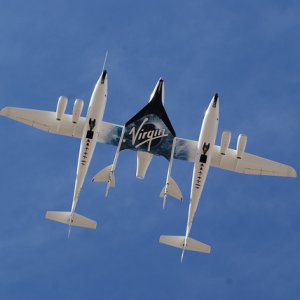A Piece of Mexico in Every Plane

STORY INLINE POST
Q: How has the executive aviation sector reacted to Bombardier Aerospace’s new Global 7500 plane?
A: Global 7500 received its airworthiness certificate in September 2018 and entered service three months later. Since then, this plane has set new speed records for business aircraft, covering the London-New York route in 5.5 hours and Los Angeles-New York in four hours. This project was originally launched as Global 7000 but its innovative wing design and other features increased its range by 500 nautical miles and prompted the company to launch it as Global 7500. Bombardier projects demand at 8,300 new business aircraft toward 2025. We expect this plane to capture a meaningful share of this segment, which will translate to growth for our Mexico operations as more fuselage components and harnesses are needed. Project cycles in the aerospace industry tend to be long, which is why the entry to service and first deliveries of the Global 7500 are key milestones for our operations.
Q: What does this mean for Bombardier Aerospace Mexico’s operations?
A: Bombardier Aerospace Mexico had a very good 2018. Thanks to our local collaborators, we delivered great results. Financially, it was one of the best years for our Queretaro operations, which projects credibility and stability for the company. We support the production of the Global 7500 from our Queretaro facility, where the aft fuselage and all electric harnesses for this business aircraft are assembled.
The new challenge for Bombardier Aerospace Mexico is to ramp up production to meet international demand for the Global 7500. Our operations had been mostly focused on creating prototypes and advancing the development of the Global 7500 program but in 2019 our job will be to consolidate our component production for this aircraft. Taking this step means increasing the efficiency of Bombardier Aerospace’s Queretaro operations, developing the support capabilities for any production rhythm the market demands and improving our current processes to create better opportunities in the future.
Q: How important are Bombardier Aerospace’s Mexico-made components for the company’s aircraft lineup?
A: Bombardier Aerospace Mexico has focused mainly on supporting Global 7500 as it leaves the project phase and becomes an aircraft production program but all Bombardier Aerospace business and commercial aircraft have Mexico-made content from Queretaro. This is also the case for the Airbus A220 that has doors manufactured in Mexico. We have some smaller projects focused on changing the configuration of executive and commercial aircraft that are already in service, such as the Challenger 350 and CRJ Series. The new Atmosphère cabin of the CRJ Series comes with a larger business class that requires new components and harnesses produced in Queretaro.
Q: How will the joint venture between Bombardier and Airbus in the A220 program impact Bombardier’s Mexico operations?
A: Bombardier and Airbus created a joint venture for this program, which resulted in the C Series being renamed A220 for sale under the Airbus brand. The main reason behind this step was the challenge Bombardier faced in the areas of marketing and aftersales service. Airbus is a much larger OEM than Bombardier and has solid distribution channels and aftersales service, as well as strong marketing capacities.
This partnership helped Bombardier gain leverage in negotiations to supply aerospace components. As the A220 is an Airbus production program with a larger consumption volume, Bombardier has the possibility to supply a much larger volume of components. The changes in this program have also pushed Bombardier to offer more competitive prices, which forces us to reduce our costs and deliver a more attractive offering. Several significant orders for the A220 were placed after the joint venture between Bombardier and Airbus was announced. For instance, United Airlines has placed an interesting order for this aircraft program. This has had a positive effect on Bombardier Aerospace Mexico because it means a greater demand for Mexican content.
Q: How on track is Mexico to enter the Top 10 global aerospace exporters ranking by value?
A: FEMIA’s goal for Mexico is to reach US$12 billion worth of aerospace exports by 2020. Since no aircraft are built in Mexico, growing exports means that more Mexico-made content will be part of aircraft assembled abroad. Bombardier Aerospace Mexico is working with FEMIA to locate, on one side, the capacities of local companies that could be useful to the aerospace industry and, on the other side, demand for these capacities. The main goal of this project is to create matches between existing demand and potential suppliers based in Mexico.
At the same time, foreign companies have approached FEMIA looking for help to identify potential suppliers in Mexico or for support to land their operations in the country. These processes attract FDI to the country and make it easier for newly arrived companies to land their operations. FEMIA works with aerospace companies to consolidate demand volumes so local suppliers gain access to better business opportunities. Collaboration of regional aerospace clusters with FEMIA and private companies is a source of synergies that promote the development of the Mexican aerospace industry.
Q: What are the main gaps in Mexico’s aerospace supplier base?
A: The country has more or less covered the Tier 1 and Tier 2 levels but there is a huge need to develop Tier 3s and Tier 4s to strengthen the supply chain. Mexico needs to fill several gaps in the areas of raw materials, forged and foundry components and local production of composite materials, including carbon fiber. However, the most important gaps are in the area of special treatments for aerospace components, such as coatings, painting and some chemical surface treatments like nickel-plating. Mexico also has a pressing need to develop its foundry component offering for the aerospace industry to continue supporting the area of machining and laminating processes, which is relatively developed in Mexico.
Q: What are the main challenges that Mexican suppliers must overcome to become more competitive in aerospace activities?
A: The main challenge is the lack of necessary quality certifications. There are several Mexican automotive companies that have an interest in diversifying into the aerospace industry but these are radically different sectors. While it is advantageous that automotive companies have already reached a solid production level, earning the necessary certifications for the aerospace industry requires significant investments coupled with lower production volumes and much longer payback times. Supplying for several OEMs is a way for companies to reach greater production volumes and develop the critical mass necessary to justify the investment needed to become a certified aerospace supplier.
Q: What challenges and opportunities can the Mexican aerospace industry expect from the new trade environment in North America?
A: USMCA will not have a meaningful commercial impact on the Mexican aerospace industry but it establishes a basis for dialogue between Mexico’s aviation authority DGAC and its US and Canadian counterparts, which could have an indirect and positive impact on the sector. Some logistics matters on the handling of chemicals are addressed in this agreement, which may work to the advantage of the aerospace industry. The US is the largest aerospace market in the world and several US companies are interested in procuring components in Mexico. This is not only due to a more competitive cost but also the high quality and added value that Mexican aerospace suppliers can deliver.
Q: What policies should the new federal administration put in place to promote growth of the Mexican aerospace industry?
A: The Mexican aerospace sector needs to remain in contact with the government, which is FEMIA’s main role. The federation has been in direct contact with President López Obrador since his first event as president-elect. It is paramount for us to raise awareness about the needs of the Mexican aerospace industry and find ways to continue generating jobs and promoting growth of the Mexican economy. As representatives of the sector, we must educate public officers of the new administration on the importance of our sector. This entails showing what aerospace products are manufactured in Mexico, the export levels the industry has achieved, their role in the Mexican economy and the number and type of jobs that this sector creates.
Bombardier is an OEM that builds high-speed and public transit trains, as well as executive and commercial aircraft through its Bombardier Aerospace division. With 68,000 employees worldwide, the company is a global leader in transportation























